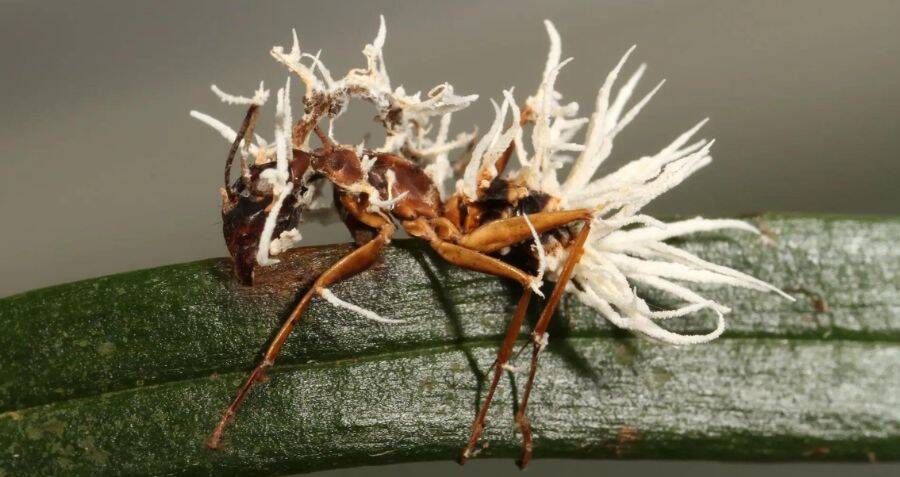The Disturbing Truth Behind Cordyceps Fungus
Cordyceps Takes Over the Ants
Cordyceps fungus is often referred to as the “mind control fungus” due to its disturbing ability to manipulate the behavior of infected ants. Once an ant comes into contact with Cordyceps spores, the fungus begins to take over its body and brain. Within a few days, the ant exhibits bizarre actions like leaving its colony and climbing higher than usual up nearby plants and trees. Scientists believe Cordyceps secretes chemicals that effectively rewire an ant’s brain to benefit the spread of the fungus.

A New Home for Cordyceps to Grow
Once an infected ant reaches a suitable location, such as a leaf or tree branch, it immediately clamps down with its mandibles never to let go. At this point, the ant has fulfilled its role as a perfect host for the fungus. Cordyceps then begins to grow out of the immobile ant’s body, usually erupting from its head. It can take around two to three weeks for the mushroom-like fruiting body of Cordyceps to fully mature. During this time, the dead ant’s body serves as a nutritious base for the fungus.
Releasing Spores to Spread Further
When Cordyceps is ready to reproduce, it releases millions of microscopic spores from the fruiting bodies. The spores are highly adapted for wind dispersal, allowing them to travel far and wide. Even a light breeze can carry the spores back down to the original infected ant colony or neighboring colonies. If an ant inhales or encounters the spores on its exterior, the horrific cycle repeats itself once more. Within a single season, a single Cordyceps infected ant colony could be completely wiped out.
A Variety of Cordyceps Target Different Hosts
Cordyceps doesn’t just infect ants. Scientists have discovered over 400 different Cordyceps species, each with a highly specific host it evolved to manipulate. Some infect caterpillars and bugs, driving them to climb higher before killing them. One species that infects grasshoppers, commonly known as “zombie grasshoppers,” is a good example of boldcordyceps fungus manipulation. Once infected, the grasshopper’s behavior turns jerky and zombie-like as the fungus takes control.
Could Cordyceps Affect Humans?
With the ability of Cordyceps to override an insect’s brain and manipulate its movements, some scientists wonder if a similar fungus could potentially infect and control humans. Thankfully, no human cases have been documented so far. However, that doesn’t mean the risk isn’t there. Some mycologists believe that with climate change increasing the spread of certain fungi, it’s possible a cordyceps-like infection may emerge that can affect people in the future. Time will tell if humanity might one day face fungal mind control as well.
Lessons from Cordyceps
While frightening to consider, Cordyceps offers important biological insights. It demonstrates fungi’s ability to evolve complex infection strategies targeting precise host behaviors. Studying the small molecules Cordyceps releases may help develop new medicines. Its capacity for hyper-specialization to infect one type of host also shows how nature meticulously adapts organisms over vast time periods. Overall, Cordyceps is a reminder of microbes’ power over other lifeforms and their potential to modify behavior for their own purposes.